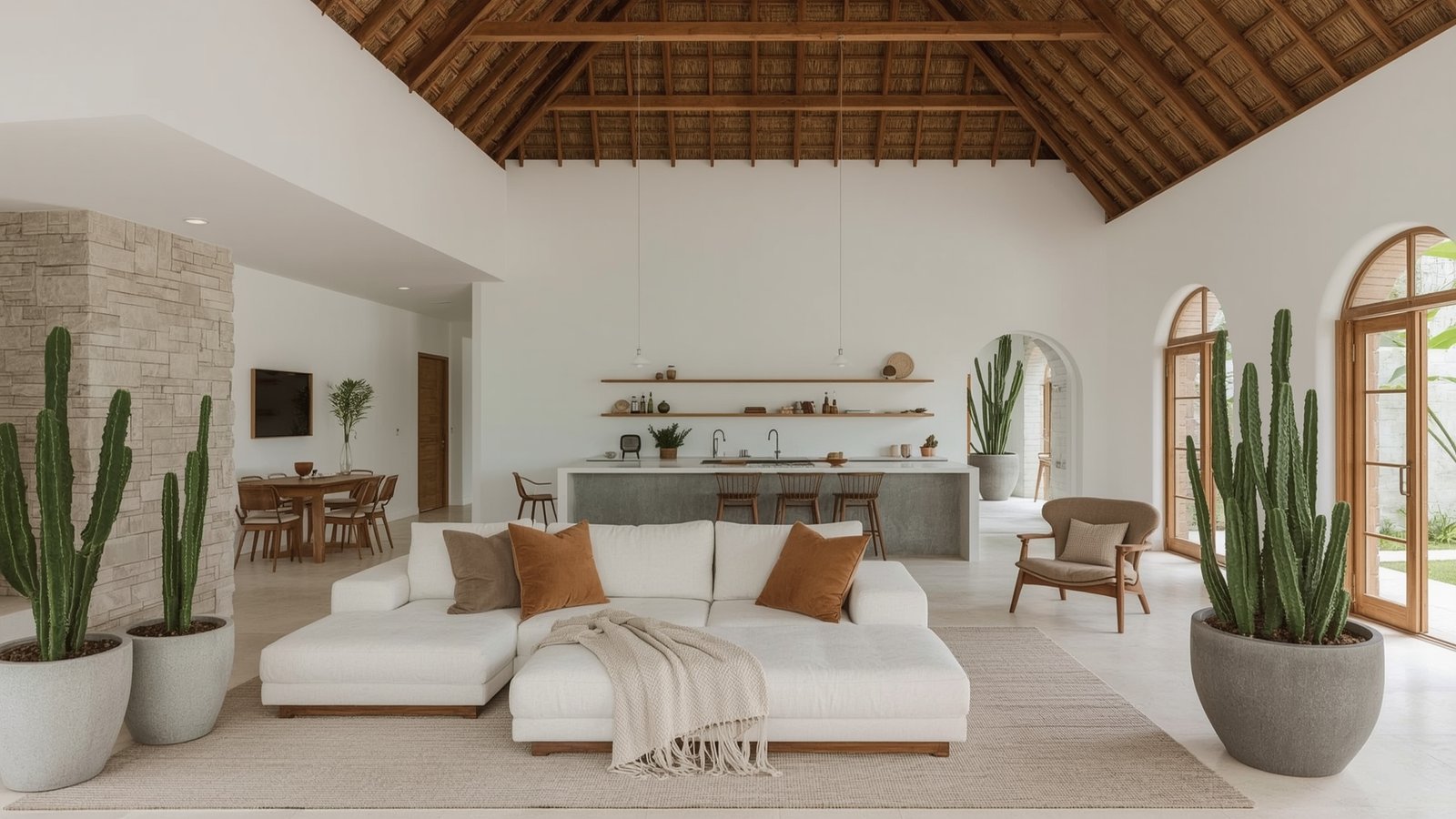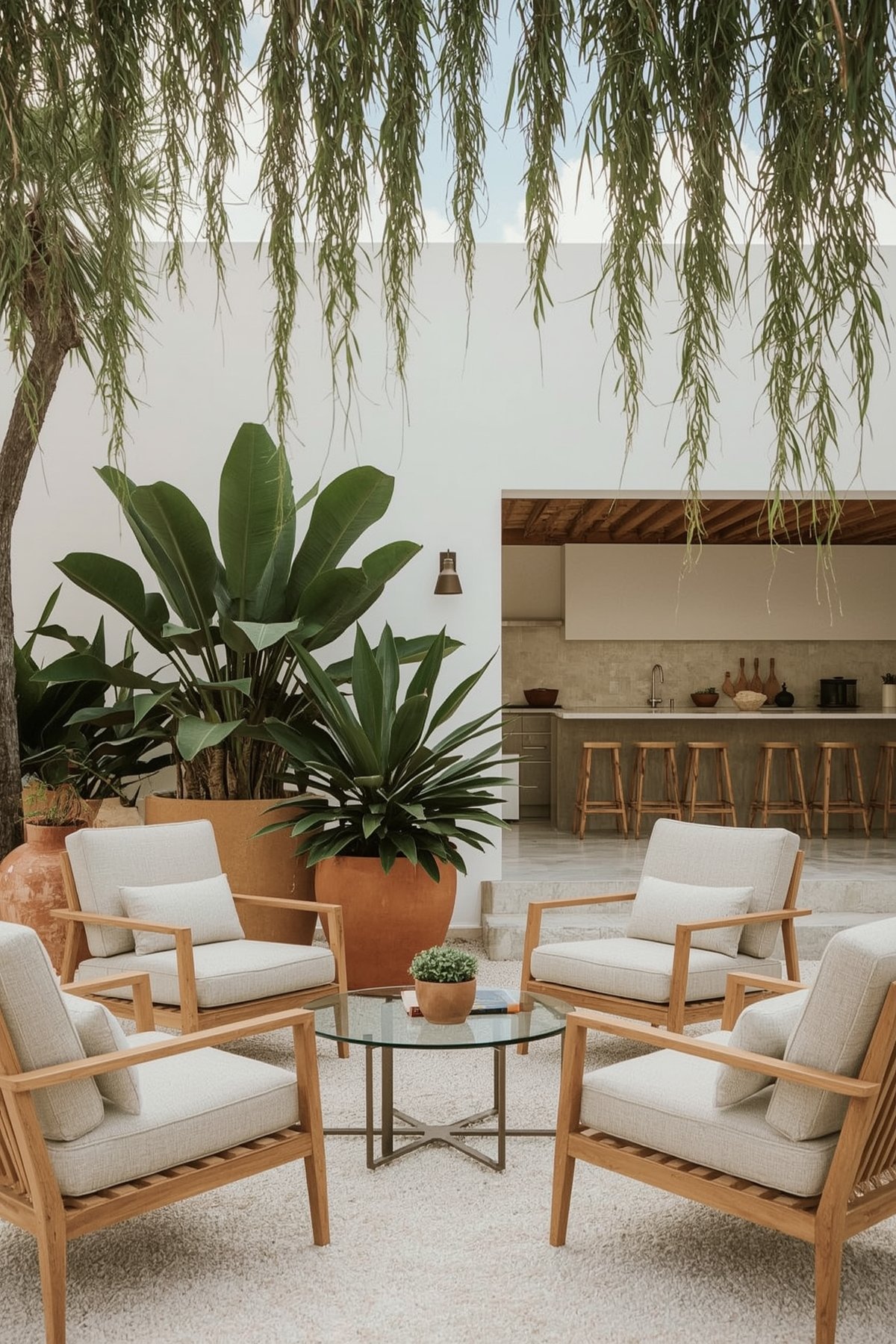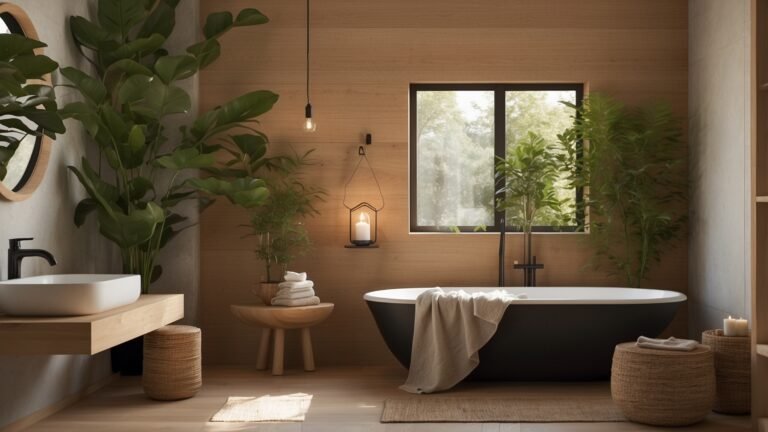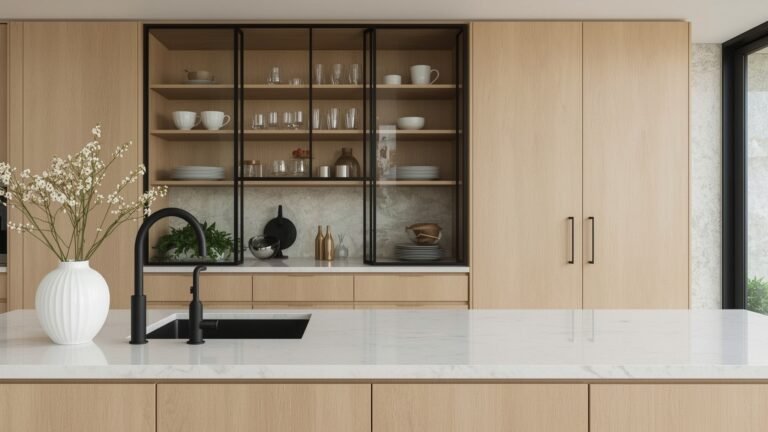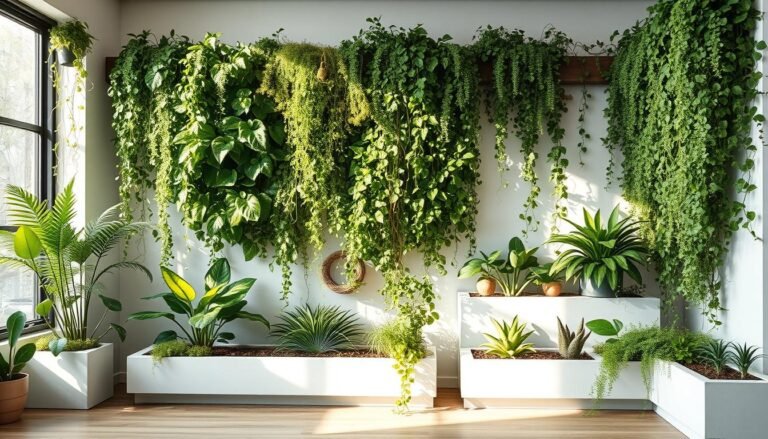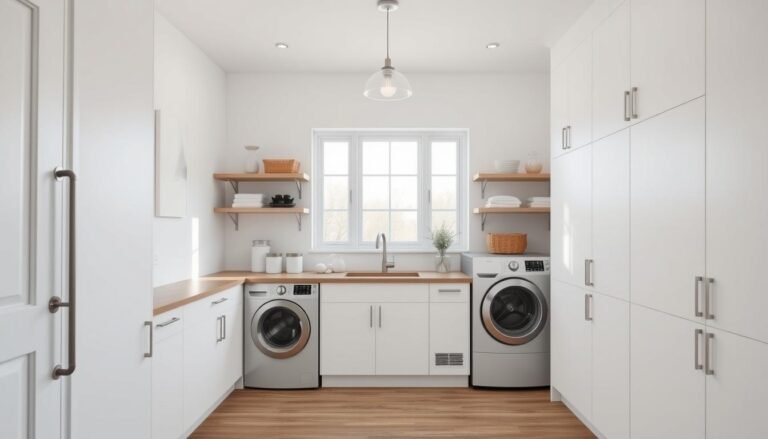Explore Top International Interior Design Trends for 2025
As I explore home decor, I see a big change. Over 70% of homeowners globally are now seeking inspiration from international design trends to update their homes. This shows how global styles are changing home decor today.
The world is mixing styles, with many cultures affecting home decor. Scandinavian minimalism is evolving, and Japanese designs bring calm. The Mediterranean charm is coming back, and African and Middle Eastern cultures add color and life to homes.
Key Takeaways
- Discover the latest global design trends shaping homes in 2025
- Explore how different cultures are influencing contemporary home decor
- Learn about the resurgence of Scandinavian and Mediterranean styles
- Understand the impact of Japanese inspired tranquility on modern interiors
- Find out how African and Middle Eastern cultures are adding vibrancy to home decor
The Global Design Landscape in 2025
Global design influences are changing our homes in exciting ways as we enter 2025. The world’s interior design is getting more diverse. This is thanks to global events and the sharing of ideas across cultures.
Are Shaping Our Homes
Global events like economic changes, environmental worries, and cultural sharing are affecting our home decor. For example, more people want eco friendly designs. This means homes are using recycled materials, energy saving gadgets, and sustainable wood.
Cross cultural influences are also big. Travel and cultural connections are bringing new design ideas home. These ideas are making our homes more diverse and interesting.
The Acceleration of Cross Cultural Design Exchange
The digital world has made sharing design ideas easier. Social media, design blogs, and online magazines help us find and use international trends. This has made our homes more multicultural, blending different styles.
For instance, Scandinavian minimalism mixed with Asian designs is popular. It creates clean, elegant spaces. Also, adding Latin American colors to modern homes brings a lively feel to homes everywhere.
As we move into 2025, global design will keep changing. It will be shaped by the sharing of ideas and cultural influences. This change is not just about looks. It’s also about making homes sustainable, useful, and showing our global diversity.
International Interior Trends That Will Define 2025
As we look ahead to 2025, interior design is full of new ideas. These ideas are changing how we design our homes. They make our homes both beautiful and useful.
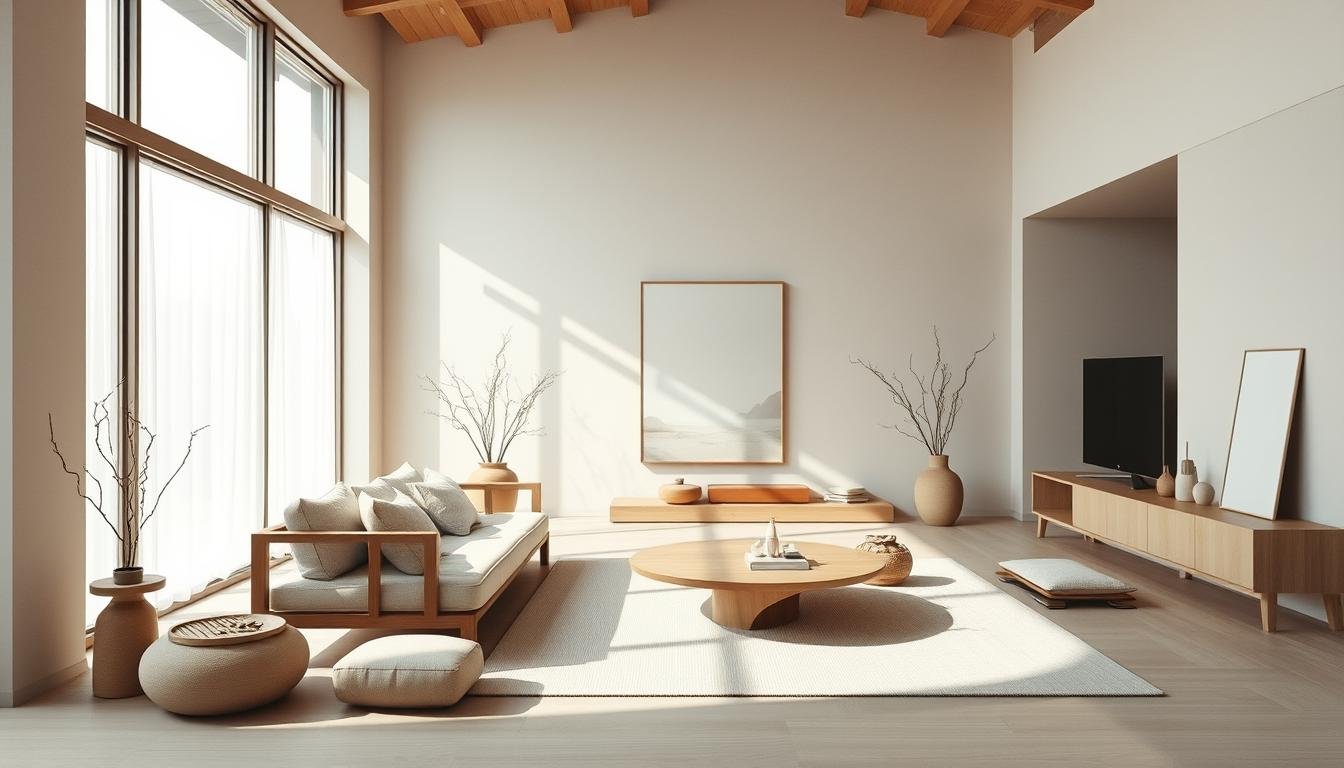
Emerging Color Palettes from Around the World
New color palettes are coming from all over the world. They range from bright Indian colors to soft Scandinavian pastels. These colors bring new life to our homes.
I love how these global colors mix with modern styles. They create a unique look that’s both old and new.
Material Innovations Crossing Borders
New materials are also changing interior design. Designers use green materials and new tech to make unique textures. For example, reclaimed wood and recycled stuff add warmth and character.
Form and Function: The New Global Balance
Designers are now focusing on both looks and use. This means our homes are both pretty and practical. It’s exciting to see homes that are fun to live in.
As we enter 2025, international interior trends will keep growing. They’re driven by global ideas and a need for green and useful designs. By following these trends, we can make homes that are stylish, meaningful, and connected to the world.
In 2025, Scandinavian design is changing. It’s moving away from just being simple. Now, it’s about mixing simplicity with warmth and cultural stories.
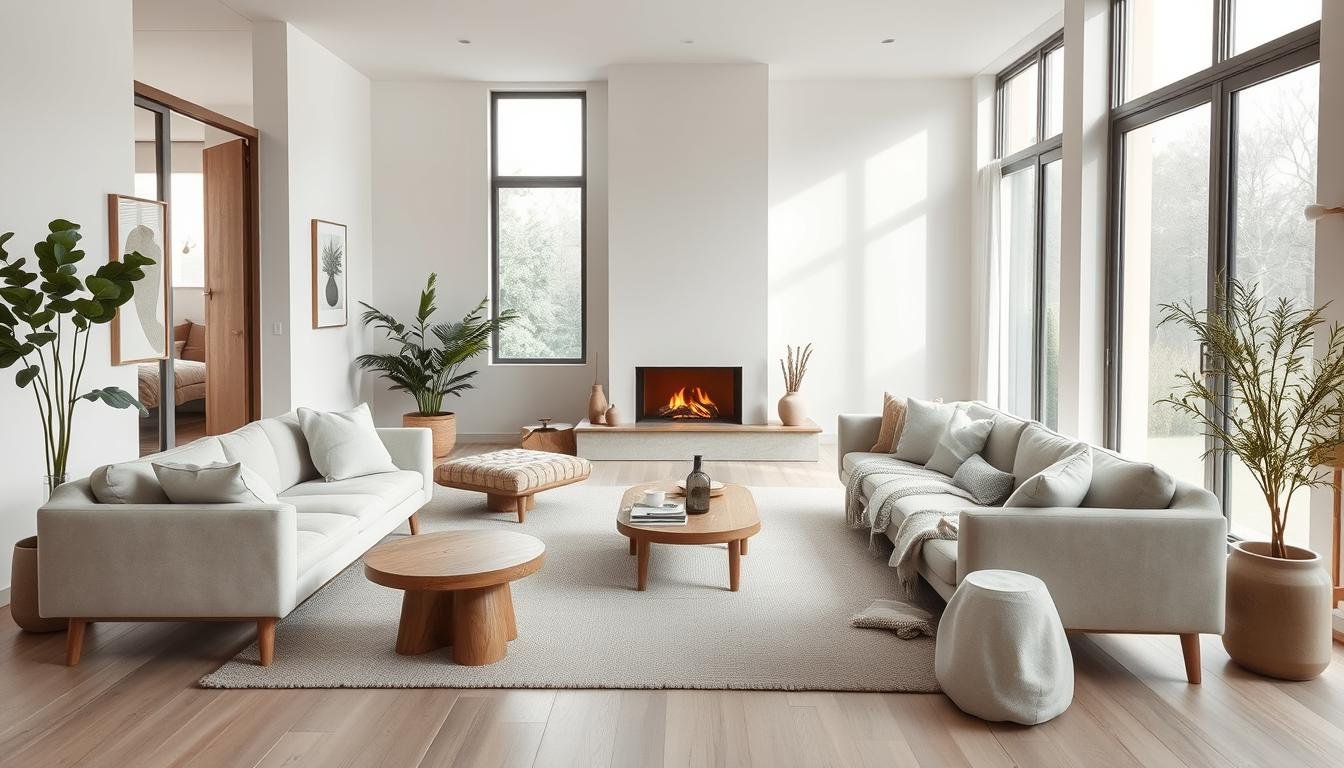
This change is not just about looks. It’s also about being green and useful. Nordic designers are making homes that look good and are good for the planet.
Neo Nordic: The Next Chapter
The Neo Nordic trend is a big part of this change. It celebrates the region’s rich history and stories. It mixes old traditions with new design, adding history and stories to homes.
This makes homes feel warmer and more personal. Neo Nordic design is changing how we see Scandinavian interiors.
Warm Minimalism with Cultural Depth
Warm minimalism is another big trend for 2025. It keeps the clean look of minimalism but adds warmth. This means using natural materials, soft colors, and cozy fabrics.
This makes homes feel cozy and inviting. They are calm but also feel like they are lived in.
Nordic Design
Sustainability is key in Nordic design for 2025. Designers are using eco-friendly materials and energy-saving ideas. They want homes that are beautiful and good for the planet.
They’re using recycled stuff and energy saving lights in all their designs. Sustainable practices are a big part of Scandinavian design now.
Japanese Inspired Tranquility: Wabi Sabi and Beyond
Japanese tranquility is changing how we design homes. It focuses on simplicity and natural beauty. This calm and serene style is making homes all over the world more peaceful.

Modern Interpretations of Japanese Aesthetics
Today, Japanese design meets modern styles in a new way. Wabi-Sabi is big, focusing on the beauty of imperfection. It makes us think more about our design choices.
Japandi: The Continuing Fusion
The Japandi style is still growing in popularity. It mixes Japanese simplicity with Scandinavian practicality. This mix creates spaces that look good and work well, all while being calm.
Incorporating Zen Elements in American Homes
More people want to add Zen decor to their homes. They want peaceful places. Zen brings calm with natural materials and simple designs.
Looking ahead, Japanese design’s calm will keep shaping our homes. By using its simplicity and focus on nature, we can make spaces that are both beautiful and caring.
Mediterranean Revival: Warmth and Texture
The Mediterranean revival is changing homes in 2025. It brings warmth and texture to our spaces. This trend makes homes feel connected to nature.
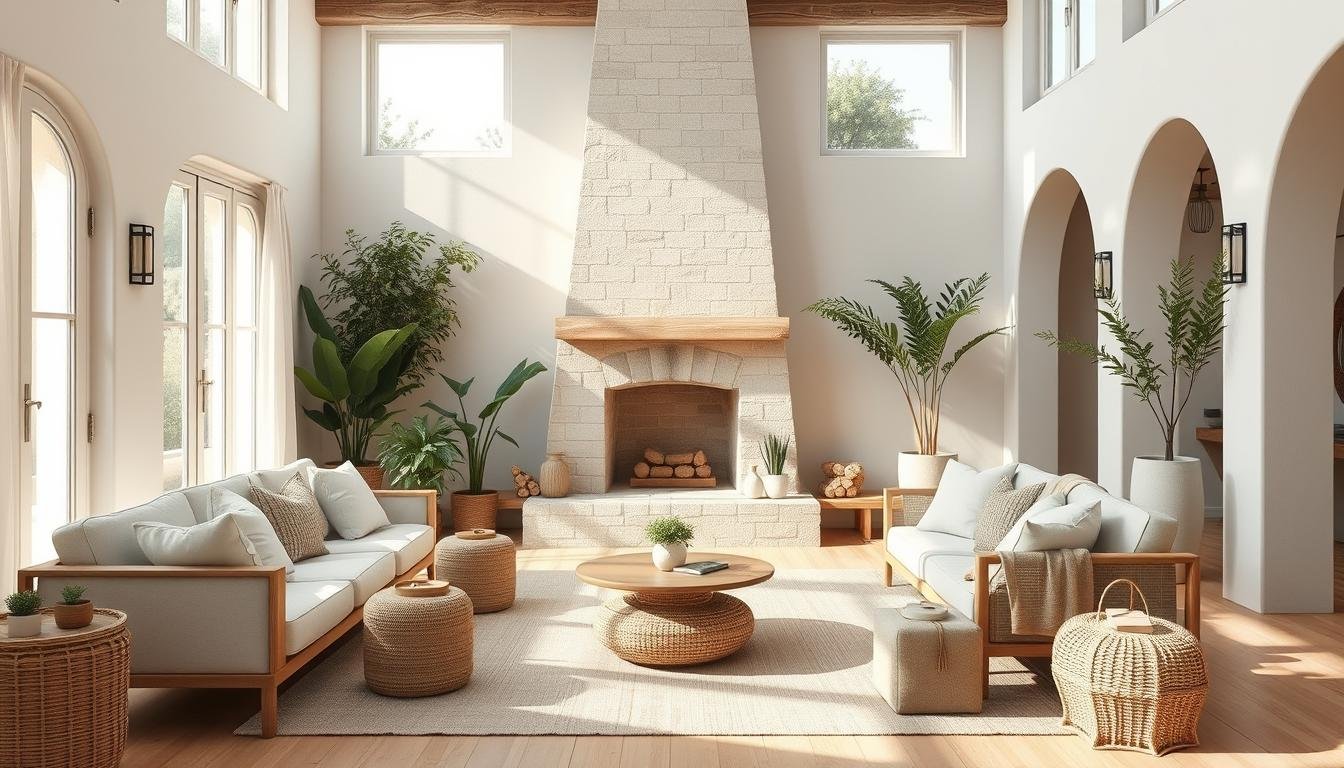
Spanish and Italian Influences in Contemporary Spaces
Spanish and Italian designs are big in today’s homes. We see rustic wooden beams from Spain and Italian terracotta floors. These add warmth and character.
These old elements mix with modern furniture. This creates a space that’s both fancy and cozy.
Earthy Tones and Natural Materials
The Mediterranean look loves earthy tones and natural materials. Colors like terracotta reds, sandy beiges, and olive greens are popular. They make the space feel natural.
Materials like stone, wood, and clay are used a lot. They look good and are strong and green.
Mediterranean-Inspired Outdoor Living
Outdoor living areas inspired by the Mediterranean are growing. They’re great for hanging out and having fun. They have comfy seats, plants, and sometimes outdoor kitchens.
This design makes indoor and outdoor spaces feel like one. It lets in lots of natural light and air.
Balinese and Indonesian Design Elements
Exploring 2025’s interior design trends, I find myself drawn to Balinese and Indonesian styles. These designs are not only captivating but also add a touch of tropical luxury to homes globally.

Tropical Luxury in Western Homes
Balinese and Indonesian design merge perfectly with nature. Using natural materials like reclaimed wood, bamboo, and stone, homes become luxurious and peaceful. This style is more than looks; it’s about living in harmony with nature.
In Western homes, adding elements like carved wooden doors, stone statues, or handwoven textiles works wonders. These items not only look great but also add cultural richness to the space.
Indoor-Outdoor Living Concepts
Balinese and Indonesian design focus on indoor outdoor living. They make spaces feel connected to nature. Features like large sliding glass doors, outdoor kitchens, and greenery help achieve this.
This approach is both stunning and practical. It lets homeowners enjoy their outdoor areas all year. Whether it’s a quiet courtyard or a big patio, these spaces are ideal for fun or relaxation.
Natural Materials and Handcrafted Details
The use of natural materials and handcrafted items is key in Balinese and Indonesian design. Hand-carved wood and artisanal textiles bring uniqueness and craftsmanship to any room.
By adding these elements to modern decor, homes become truly special. Whether it’s a standout piece of furniture or a decorative item, handcrafted touches can make a room stand out.
African and Middle Eastern Design Influences
African and Middle Eastern cultures are now part of modern interior design. They bring vibrant patterns and architectural elements. This is thanks to global connectivity, making homes around the world more diverse.

Patterns and Textiles Making Global Impact
African and Middle Eastern patterns and textiles add depth and culture to homes. Vibrant prints and intricate weaves are used in big ways. They can be on accent walls or in custom furniture.
Using these textiles in modern design honors their heritage. It also adds a special touch to today’s home decor.
Architectural Elements from North Africa and the Middle East
Architectural pieces like arches, domes, and tile work are now in modern homes. They bring a sense of exoticism and history.
These elements are not just pretty. They connect old and new design, showing the strength of cross cultural styles.
Incorporating Cultural Artifacts Respectfully
Adding cultural artifacts to homes needs care and respect. It’s about knowing their importance and how to use them right.
This way, homes become more than just pretty. They tell stories of personal and cultural significance.
Latin American Vibrancy in Modern Interiors
Latin American vibrancy is changing modern interiors with its rich culture. Countries like Mexico and Brazil are adding their unique touches to global design.
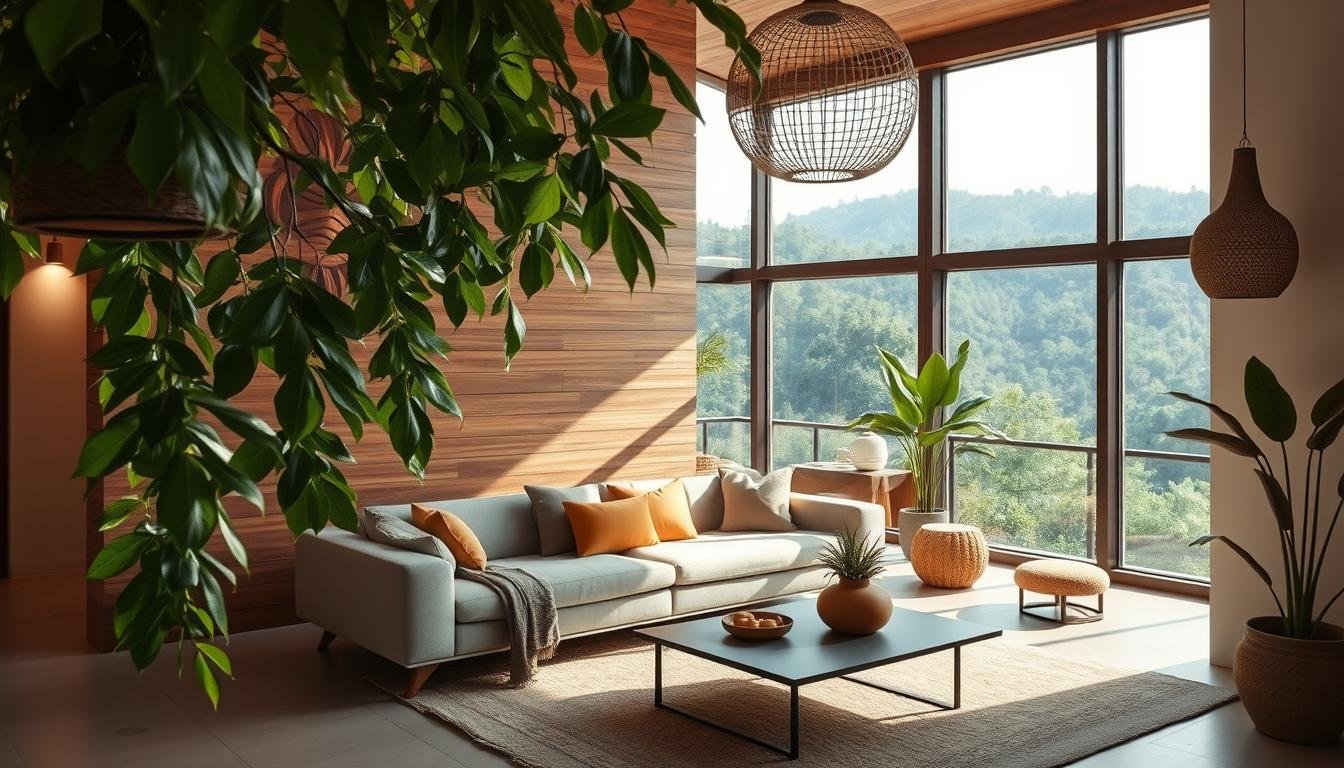
Color Theory from Mexico to Brazil
The bold colors of Latin American culture are big in modern design. Bright hues and earthy tones mix in new ways. This makes spaces lively and warm.
In Mexico, terracotta and turquoise are leading a colorful trend. Brazil’s tropical colors are also making a splash globally, full of energy.
Handcrafted Elements and Artisanal Focus
Latin America’s craftsmanship is celebrated in modern interiors. Handmade textiles and furniture add a personal story to each space.
This focus on craftsmanship supports local artists. It also brings unique character to homes, unlike mass-produced items.
Tropical Modernism’s Global Reach
Tropical modernism, from Latin America, is loved worldwide. It uses natural materials and big windows. This style brings joy and warmth to homes everywhere.
As design moves across borders, tropical modernism is being used in many styles. It’s making the global design scene richer.
Sustainable and Biophilic Design Across Cultures
The world is moving towards a greener future. The interior design world in 2025 is embracing green and natural designs. It’s exciting to see how different cultures are joining in.
Using green practices in design is now common. Eco conscious interiors use local materials and cut down on waste. They also make spaces healthier for living.
Global Approaches to Eco Conscious Interiors
Every culture has its own way of doing green design. In Scandinavian countries, using old wood reduces waste and adds history to homes. Japan is using bamboo and paper to bring nature inside.
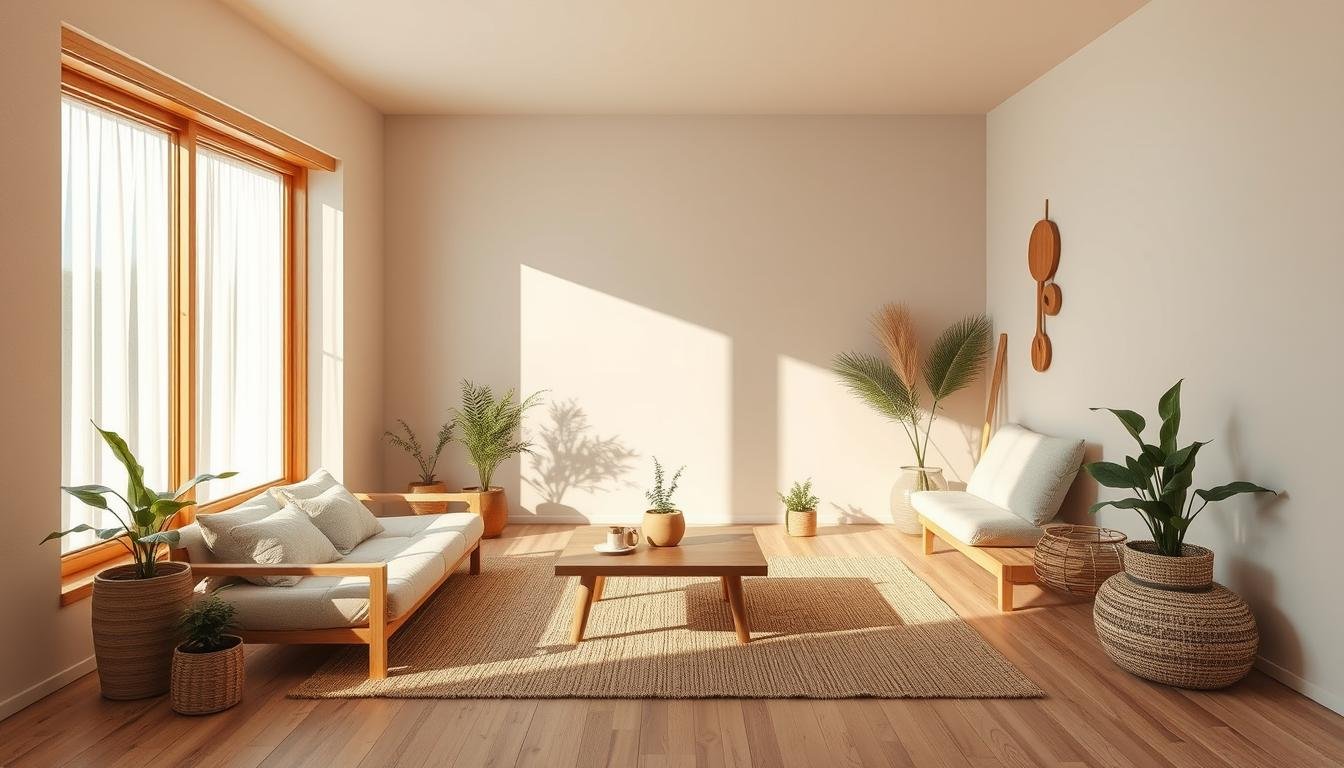
Living Materials and Natural Elements
Biophilic design focuses on living materials and nature. This includes green walls and furniture made from natural fibers. These elements make spaces look better and are healthier for us.
Circular Design Principles in Different Countries
Circular design is becoming popular worldwide. Countries are working to reduce waste and encourage recycling. In the Netherlands, designers make furniture that can be recycled later.
This idea is spreading everywhere, from Africa to Latin America. It’s clear that green and natural design will shape our homes in the future.
FAQ
What are the top international interior design trends for 2025?
The top trends include Scandinavian evolution and Japanese inspired tranquility. Also, Mediterranean revival and Balinese and Indonesian design elements are popular. African and Middle Eastern influences, along with Latin American vibrancy, are also trending. Sustainable and biophilic design are key across cultures.
How are global events shaping our homes in 2025?
Global events are making our homes more diverse. They’re speeding up the exchange of design ideas. This leads to unique and fascinating trends that bring us closer together.
What is the Neo Nordic trend in Scandinavian design?
The Neo Nordic trend honors Scandinavian heritage. It also focuses on sustainable practices. This trend is pushing eco friendly design to new heights.
How can I incorporate Japanese inspired tranquility into my home?
You can add Japanese tranquility with modern Wabi Sabi aesthetics. Japandi fusion and Zen elements are also great. These create peaceful spaces that improve well being.
What is the Mediterranean revival trend in interior design?
The Mediterranean revival trend adds warmth and texture. It uses Spanish and Italian influences, along with earthy tones and natural materials. It also includes Mediterranean inspired outdoor areas.
How can I introduce tropical luxury into my Western home?
Introduce tropical luxury with Balinese and Indonesian design. Use natural materials and handcrafted details. Also, create indoor outdoor living spaces.
What are some ways to incorporate African and Middle Eastern design influences into my home?
Add African and Middle Eastern design with vibrant patterns and textiles. Use architectural elements and cultural artifacts. This celebrates the rich heritage of these regions.
How can I make my home more sustainable and biophilic in 2025?
Make your home sustainable and biophilic by using eco conscious interiors. Incorporate living materials and natural elements. Apply circular design principles.
What is the significance of cross cultural design exchange in modern interior design?
Cross cultural design exchange enriches our homes. It fosters a global community. It leads to unique and fascinating trends.
How can I create a globally inspired home that reflects my personality and style?
Create a globally inspired home by embracing diverse styles. Choose trends that resonate with you. Make your space culturally rich and meaningful.
The Bottom Line
As we wrap up our look at top international interior design trends for 2025, it’s clear. The world is our playground for making a globally inspired home. We can mix styles from everywhere to make spaces that are not just pretty but also full of culture and meaning.
I can add touches of Bali and Indonesia to my modern home. The trick is to mix global trends with my own style. This way, I create a space that’s both unique and eye catching.
Thinking about cultural influences and global styles helps me keep up with trends. I can use things like eco friendly materials, nature inspired designs, or bright colors. This opens up a world of possibilities for a home that’s truly inspired by the globe.

ABOUT the AUTHOR
TOKI; INTERIOR DESIGN & lifestyle CONTENT CREATOR.
Hey there! I’m Toki—the design-obsessed brain behind Dwell Studio 24. I’m a content creator passionate about interior design, photography, and creativity, living in a 77-year-old house with my husband and our awesome three kids. I write about interior design, furniture, home topics, and my lifestyle, including travel, recipes, skincare, and daily routines. I hope to inspire your next project and lifestyle!
ABOUT the AUTHOR
TOKI; INTERIOR DESIGN & lifestyle CONTENT CREATOR.

Hey there! I’m Toki—the design-obsessed brain behind Dwell Studio 24. I’m a content creator passionate about interior design, photography, and creativity, living in a 77-year-old house with my husband and our awesome three kids. I write about interior design, furniture, home topics, and my lifestyle, including travel, recipes, skincare, and daily routines. I hope to inspire your next project and lifestyle!
ABOUT the AUTHOR
TOKI; INTERIOR DESIGN & lifestyle CONTENT CREATOR.

Hey there! I’m Toki—the design-obsessed brain behind Dwell Studio 24. I write about interior design, furniture, home topics, and my lifestyle, including travel, recipes, skincare, and daily routines. I hope to inspire your next project and lifestyle!

